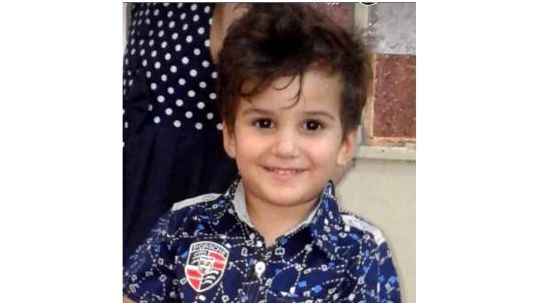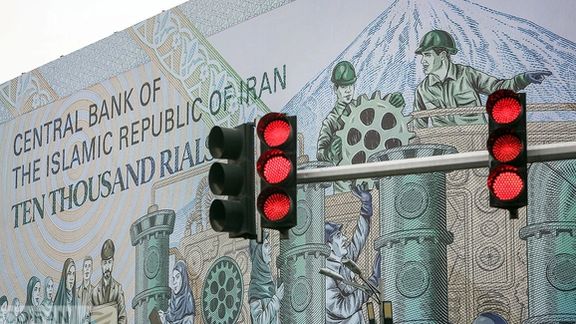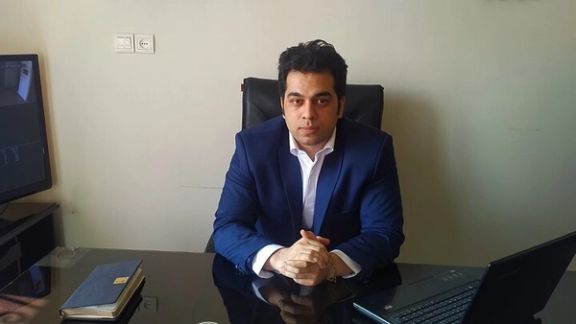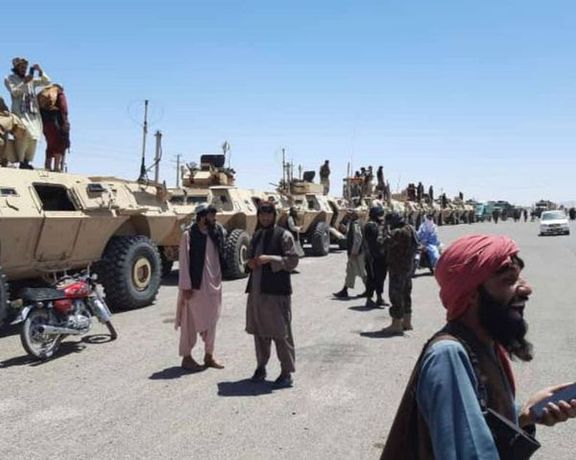Nine-Year-Old Killed In Iran As Police Open Fire At Family Car

A nine-year-old Iranian boy has been killed after the police opened fire at his father's car in Iran's Khuzestan province on Friday.

A nine-year-old Iranian boy has been killed after the police opened fire at his father's car in Iran's Khuzestan province on Friday.
Morteza Delf-Zargani’s father says the police started shooting at their car in the city of Shushtar without even a single warning and based on a false report of car theft.
According to the victim’s uncle, “when they saw the police car behind them, they intended to stop, but without any warning the police opened fire and Morteza died on the spot.”
The police claim they received reports about a car theft that fit the description of the family’s vehicle, and the officers ordered the suspect to pull over, but the driver did not pay attention to the warning and sped away.
In March, a two-year-old child was killed after Iranian special forces opened fire at the car carrying him and his family in the central city of Esfahan (Isfahan).
Morteza's case is also reminiscent of Kian Pirfalak, a 10-year-old boy who was killed by the Islamic Republic's security forces when they started shooting at his father's car during the 2022 protests.
Ironically, Morteza's death coincided with Kian's birthday anniversary.
Many innocent bystanders were killed by security forces during months of protests in 2022 and 2023. More than 500 people were shot or killed by security forces using deadly force.
Kian and his family were targeted by plainclothesmen during a night of protests in Izeh. Kian’s father was also paralyzed because of serious injuries he sustained during the attack. The government claimed “terrorists” had fired at the car, but Kian has become a public symbol of the regime’s brutality.

Iran’s security forces arrested dozens of families of the victims of state violence in two Kurdish cities where they gathered to commemorate their loved ones.
The families were from the cities of Dehgolan, Sanandaj, Divandareh and Saqqez, who had traveled on Friday to visit the graves of those killed during the nationwide protests in Bukan and Saqqez.
The petitioning families chanted, "We Will Stand Until the End" and "Woman Life Freedom".
In Aichi cemetery in Saqqez, where Mahsa Amini’s body is laid to rest, dozens held the pictures of their loved ones.
However, regime agents arrested and transferred about 40 of them to an unknown location, including six mothers of young victims.
During the recent protests in Iran, ignited by the death in custody of 22-year-old Amini in September 2022, security forces killed hundreds of people and many more received permanent injuries. More than 20,000 people, including university students, actors and journalists were also detained.
The authorities not only failed to accept any responsibility but they put pressure on some of the victims' families who made statements against regime officials during funerals or on social networks. Relatives of many victims killed by the government have been summoned for questioning and arrested.
According to human rights groups, the Islamic Republic has killed over 500 people, including at least 70 children, during its crackdown on the ongoing protests.

Iran's top Sunni cleric Mowlavi Abdolhamid on Friday slammed the government for spending the country’s money to help other nations and ignoring its own people.
He said the government fails to create jobs which forces many to engage in small criminal activities only to survive, and then hanged when they are caught.
In his sermon the outspoken Mowlavi (title for Sunni cleric) told his congregation in Zahedan, capital of southeastern Sistan-Baluchestan Province, that lack of jobs in his province and some other impoverished areas is the prime reason people are driven to smuggling fuel, minor drug-related offences, or drug trafficking.
In Iran gasoline and especially diesel are extremely cheap (around 10 US cents per gallon) due to heavy government subsidization. This leads to smuggling fuel to neighboring countries such as Pakistan which has long borders with Sistan-Baluchestan.
Many of these individuals, the cleric said, end up in prison or are even executed for committing crimes that involve profiting as little as 5 million rials ($10).

“People have to do all sorts of things just to earn their bread,” he told his congregation who took to the streets after the prayers for the 36th consecutive week to chant anti-government slogans.
Haal Vsh, a website dedicated to human rights and events in Iran’s Baluchestan, reported Friday that security forces cracked down on young Baluchis in various areas of Zahedan after the protests and arrested many.
The Sunni cleric who has proven to be the unofficial voice of the country’s Sunni population has become popular even among Shiites for standing up to the regime and delivering fiery speeches every week since September when the Women, Life, Freedom protests spread across the country.
In his sermon Abdolhamid also brought up the issue of justice for the victims of what has come to be known as the Bloody Friday of Zahedan. On September 30, 2022, security forces opened fire on civilian anti-government protesters killing more than 93 protesters including children and onlookers in Zahedan after Friday prayers.
“Carrying out justice would have brought tranquility and peace [to the locals],” he said. The government has not taken action against those security forces who opened fire on September 30.
“You never remedied our troubles or asked us about what gave us pain,” Abdolhamid said, adding that calm will not be established unless the complaints of workers, teachers, civil servants and pensioners are addressed and remedied.
As Sunni Muslims, Baluch citizens are both an ethnic and religious minority. Estimates of the Iranian Baluch population range from 1.5 to 2 million people. The Baluch community – along with the Kurds -- has always been among the most persecuted minorities and has the largest number of people executed in the country.
Most Baluchis are executed over drug-related charges, but activists say their trials lack due process and poverty-stricken drug mules are often executed without having had proper legal representation.
According to Haal Vsh, the execution of Baluch citizens has increased significantly since last year’s nation-wide protests. It said in a recent report that 182 people were executed in 23 prisons across Iran in the past year of which81% were drug-related.

The US has released damning intelligence showing Tehran and Moscow building a drone manufacturing plant in Russia for use in Ukraine.
On Friday, White House National Security Council spokesperson, John Kirby, said: “This is a full-scale defense partnership that is harmful to Ukraine, to Iran’s neighbors, and to the international community. We are continuing to use all the tools at our disposal to expose and disrupt these activities including by sharing this with the public — and we are prepared to do more.”
Providing further proof for the deepening military relationship between Russia and Iran, The White House released satellite imagery of the planned location of the UAV (unmanned aerial vehicle) manufacturing plant in Russia’s Alabuga Special Economic Zone, about 600 miles (nearly 1,000 kilometers) east of Moscow. The satellite image of the planned location of the purported drone manufacturing plant was taken on April 3.
“We have information that Russia is receiving materials from Iran needed to build a UAV manufacturing plant inside Russia,” said Kirby, who claims the plant could be fully operational early next year.
The intelligence confirmed data by a Wall Street Journal report in February that the two countries had plans to build such a factory, which could make at least 6,000 drones for the war in Ukraine.

Another declassified government graphic shows the drones are built in Iran, shipped across the Caspian Sea to Russia — with a port Iran helped develop — and then transferred to two air bases. “The support is flowing both ways: from Iran to Russia, and from Russia to Iran,” Kirby said.
Kirby added that in response, Russia has offered Iran “unprecedented” defense cooperation, including billions of dollars’ worth of military equipment such as Su-35 fighter jets, attack helicopters, radars and Yak-130 combat trainer aircraft.
According to Kirby, Washington will continue to impose sanctions on the entities involved in the transfer of Iranian military equipment. This is in addition to new steps the Biden administration, along with the European Union and the United Kingdom, has already taken to restrict the transfer of electronic components found in Iranian drones to the battlefield in Ukraine.
Already dozens of individuals and entities involved in sending Iranian Shahed kamikaze drones to Russia have been sanctioned by the United States and Europe. Russia has already used hundreds of these drones to attack military and civilian targets in Ukraine, or to try to overwhelm air defenses during its large-scale missile attacks on cities.
He said the US has released the information in order to the public “to expose and disrupt” the countries’ “full-scale defense partnership.”
A senior administration official -- who asked for anonymity -- told Politico that “Actors like Iran want this kind of behavior to be secret. We are shining a light on it publicly to let Iran know we are aware of exactly what they’re doing, and to build pressure on Iran internationally, having alerted other countries to Iran’s actions."
Kirby added that the administration also plans to announce “a new government advisory to help businesses and other governments better understand the risks posed by Iran’s [unmanned aerial vehicle] program and the illicit practices Iran uses to procure components for it.”
“This will help governments and businesses put in place measures to ensure they are not inadvertently contributing to Iran’s UAV program,” he stated.

Iran’s battered currency has risen by more than 10 percent since early May on hopes of a foreign policy breakthrough, but the economic fundamentals remain bleak.
The rial this week broke through the important psychological barrier of 500,000 against the US dollar, as several media reports spoke of secret contacts with the United States to reach a sort of an interim agreement that would unblock more than $15 billion of Iran’s frozen funds.
The US denied the reports of a deal on Thursday, although it did not reject reports of ongoing contacts. Tehran’s currency market was officially closed on Friday, so the impact of the US announcement, if any, will be felt on Saturday.
Commentators speaking to local media in Tehran said that releasing even $20 billion will not affect the fundamentals of a weak economy and would represent a temporary respite from the pain of oil export sanctions.
Sajjad Burbur, an Iran-based economist, speaking to the reformist Aftab News website Friday warned of the fast-galloping money supply in the country and predicted that eventually the rial can fall further, reaching 700,000 against the US dollar.

Burbur argued that the Islamic Republic has no means of addressing the economic crisis except “therapy talk”, meaning trying to put a good face on the state of affairs and present exaggerated or fake news.
He argued that the government continues to print money to pay its bills, and this will inevitably devalue the currency. “In 2018, the money supply was less than half of all liquidity, but now it is far more than that. All factors that help the dollar rise against the rial have converged together,” he pointed out.
With far less oil export income because of US sanctions, the government continues to print money and makes daily statements to calm the markets.
Promises of close economic cooperation with Russia and China and hints of talks with the United States are designed to boost confidence in the economy, but experts point out that these will not have a lasting impact and economic fundamentals will have the last word.
With annual inflation approaching 70 percent, affording housing and food has become impossible for millions of families.
Housing specially has risen more than ten-fold in the past five years, while salaries have increased at most five-fold.
Owners see their property as a hedge against inflation and adjust prices and rents according to the value of the US dollar, while people’s income is far less.
The average price for one square meter of an apartment in Tehran is around $1,000, roughly the same as in 2018 before the rial bean to fall. People are migrating out of large cities and commuting long distances just to afford rents.

The former chairman of Iran’s central bank, Abdolnasser Hemmati, in a tweet on Friday asked President Ebrahim Raisi why real estate inflation numbers have been withheld by the government in the past five months.
“Do you know anything about how much rents have gone up?” Hemmati asked the president.
Some people hold a full-time job just to pay the rent, while either they or their spouses must work a second job just to afford food. The average worker has a monthly salary of $150, down from $220 last year when the rial was higher at around 300,000 to the dollar.

Amid rising tensions between Iran and Afghanistan, Taliban forces carried out a military drill near the border with Iran on Thursday.
According to the state-run Bakhtar News Agency, the Taliban military held a war game in Nimruz,located in the southwestern part of the country and to the east of Iran’s Sistan and Baluchestan province.
The drills came amidst growing tensions, fueled by a decades-old water dispute. Iran has accused Afghanistan's Taliban of violating a 1973 treaty by restricting the flow of water from the Helmand River to Iran's parched eastern regions, an accusation denied by the Taliban.
During May, a series of incidents escalated to bring tensions between the two countries to their worst in years, the deadliest of which seeing two Iranian soldiers and one Taliban fighter killed after shooting broke out near a border post.
Iranian President Ebrahim Raisi had earlier warned the Taliban over disregarding Iran's water rights under the 1973 treaty while the Taliban rejected the perceived threat, with a former Taliban official mocking the president in a video that went viral.
Evidence also surfaced late last month showing a convoy of Taliban tanks deployed from Herat to Islam Qala on the border with Iran with forces seen stationed in the region with heavy military equipment, suggesting a more heavily armed presence than before the water dispute escalated.